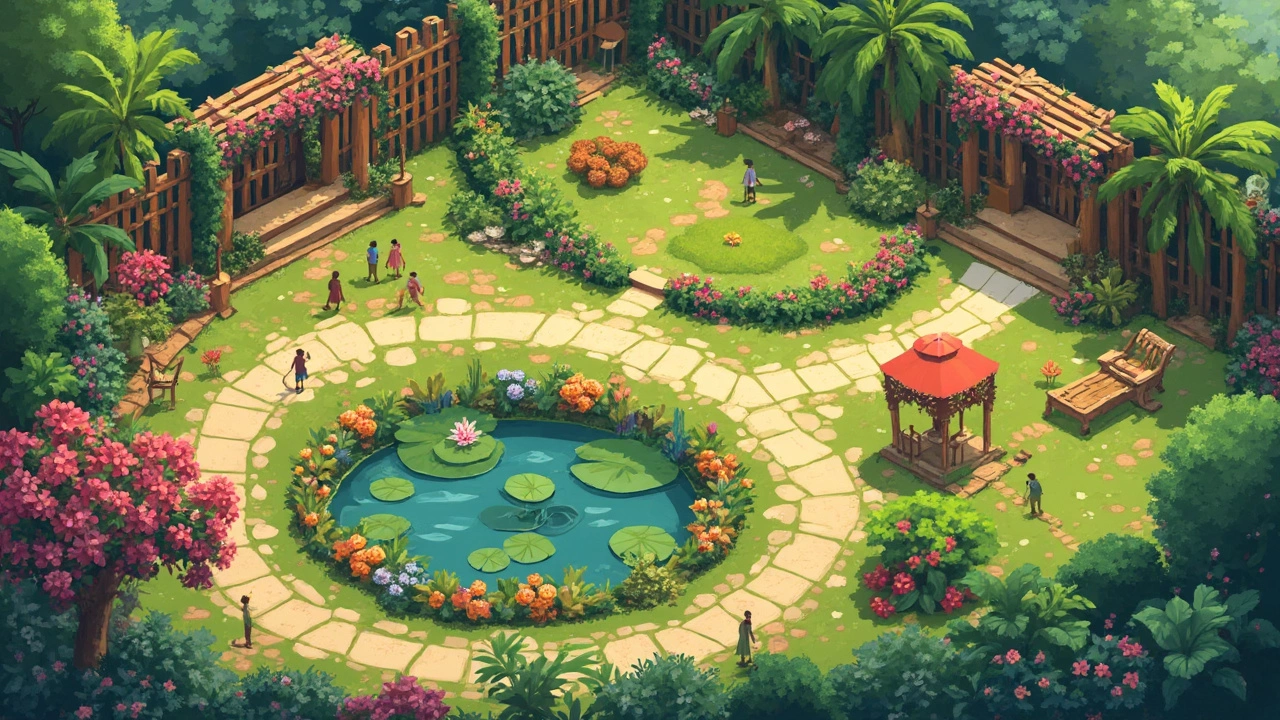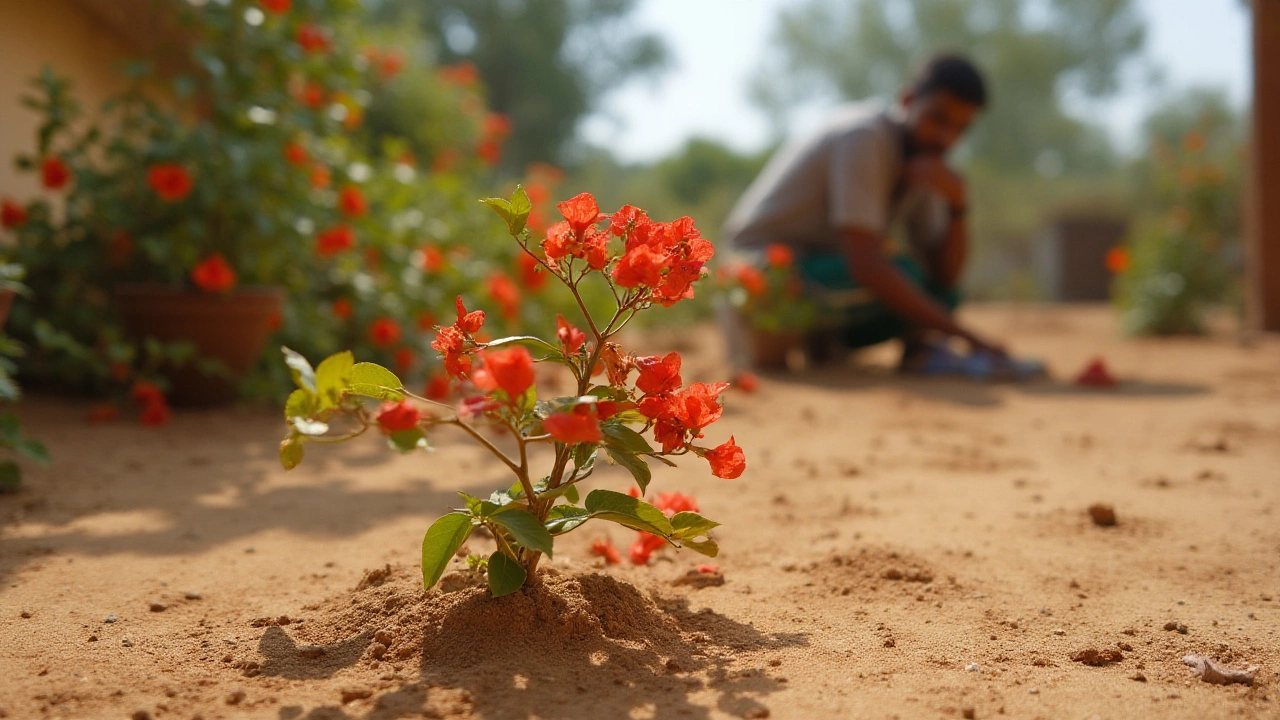Breaking Up a Large Garden: Step-by-Step Guide to Reimagining Your Outdoor Space

Ever stared at a sprawling garden and felt like you didn’t know where to even begin? You’ve just got this huge green canvas, and maybe it’s starting to feel more like a chore than a slice of paradise. Funny thing—researchers in landscape architecture at Cornell University once found that people actually enjoy smaller sections of a garden more. It’s like the difference between a chaotic supermarket and your favorite cozy café. But how do you turn that large, undefined space into something amazing, personal, and manageable?
Why Break Up a Large Garden?
There’s a solid reason so many top designers chop up gardens into pieces, and it’s not just to make them pretty. There’s this visual magic that happens when you create sections, or “garden rooms,” as some pros call them. When it’s all one giant expanse, your eyes wander and nothing feels special. But divide it up, and every corner gets a purpose. It’s easier on the mind—and honestly, way easier on your mower.
Breaking up a garden also helps with microclimates. Want a shady nook for your ferns and a dry, sunny patch for succulents? Split things up, and you control the conditions in each area with the right trees, fences, or even big pots. Plus, it can actually boost your property value. The American Society of Landscape Architects once polled realtors who said well-designed gardens can add up to 20% to a property’s value. And let’s not forget, maintenance just gets less exhausting. Nobody loves a never-ending lawn or a flower bed that stretches forever—and that goes double when weeds show up.
Then there’s the personal side. You can make a breakfast patio close to your kitchen, hide a hammock far from the main house, or create an edible patch just for tomatoes and herbs. Every family member can have a favorite spot. Kids get wild play zones away from delicate plants; you get calm, private spots for coffee. The possibilities are endless when you stop thinking of your garden as one big rectangle and start thinking of it like “rooms” in a house, each one for a different mood.
Sound overwhelming? It isn’t, I promise. Unlike indoor remodeling, you don’t need dust masks or power tools blowing out your eardrums. You just need vision, a shovel, and a few clever design tricks.
Planning and Mapping Out the Space
The trick is to look at your garden like a map, not just a patch of grass. Stand at your kitchen window and sketch what you see. Where’s the best sun? Where’s the wind a pain in the neck? Mark the trees that aren’t going anywhere. Figure out how you move through the space—do you always take a shortcut to the shed? Start with what’s permanent, since these become natural dividers or anchors for your new “rooms.”
Grab a couple of colored pencils (seriously, it helps). Create a few rough zones: dining area, wildflower patch, veggie garden, shade nook, play space. They don’t need perfect lines at this stage. Big question—what’s missing in your current yard? More privacy? More places to sit? More reasons to spend time out there? Keep your answers close; they’ll shape everything to come.
Let’s talk budget. You don't have to drop thousands. In fact, you probably already own what you need to at least block out new areas—think benches, old trellises, or even those leftover bricks stacked behind the shed. Surveys by the UK’s Royal Horticultural Society found most striking gardens use reclaimed materials and clever repurposing. Don’t toss odd bits—use them creatively for edges or features.
Another tip: Think about water and paths. How does rain move through your garden? If you ignore that, you’ll end up with boggy corners or fried tomato plants. Those little slopes and flat spots can guide where you put different features. And pathways—don’t just plop them down. Use them to “invite” people from one section to the next. Paving stones, mulch, or even just short grass can guide visitors. It’s about flow. If you want to get super into it, draw a little diagram showing possible routes and where you want people to stop, linger, or discover something unexpected.

Practical Ways to Divide Large Gardens
Dividers are where the fun really starts. Hedges are a classic, sure, but you don’t have to wait years. You can use instant solutions like trellis fences, bamboo screening, or even tall grasses in big planters. There’s a fun fact here: Ornamental grasses can reach their full height in just one summer, so you could have a natural-looking screen by autumn if you plant smartly in spring.
Think vertical as well as horizontal. Archways, pergolas, and even tall plant stakes become portals between sections. You see them in glossy design magazines for a reason—they make ordinary gardens feel magical. Plus, these structures double up as support for climbers like rose or wisteria, adding scent and color overhead.
Large garden owners often get stuck on fences, but naturalistic dividers sometimes work better. Small orchard-style tree clusters, long flower borders thick with lavender, or even a zig-zag of raised beds all split a big space into inviting pockets. If you really don’t want to plant, use decorative screens or movable structures. At Chelsea Flower Show, designers often use metal, wood, even recycled glass for show-stopping partitions—with a much smaller price tag than a solid fence.
Keep your materials consistent but not boring. Say you choose brick for edging—echo it in a patio or a path. For a softer look, repeat the same kind of mulch or use a single type of timber across beds and borders. It keeps the whole garden feeling connected, not like a yard sale of random ideas thrown together.
Don’t forget about light. One of the fastest ways to carve out evening “rooms” is with lighting. Stake solar lights along a walkway, or string outdoor fairy lights through a pergola. Even a couple of lanterns make a hidden nook feel special, and they cost almost nothing. Statistically, adding lighting to gardens sees a noticeable jump in how often people use them after sunset—that’s according to a survey by the National Garden Bureau.
| Divider Type | Time to Establish | Budget | Best For |
|---|---|---|---|
| Hedges (Yew, Box) | 2-3 years | Medium | Formal, classic spaces |
| Ornamental Grasses | 1 season | Low | Natural, soft screening |
| Trellis Panels | Immediate | Low to Medium | Flexible, quick privacy |
| Raised Beds | 1 weekend | Low to High (depending on material) | Veggies, textural division |
| Movable Screens | Immediate | Low | Temporary or seasonal sections |
If you’re tight on space, use plants that double as dividers and food sources—raspberries, currants, espaliered apples can all edge sections while giving tasty harvests. The cool thing about plant-based barriers? They attract pollinators and boost garden health. According to a 2023 Royal Horticultural Society study, gardens with more divided planting attract double the beneficial insects compared to open lawns. If wildlife is your thing, work in a hedge of hawthorn or hazel to support birds and bugs.
The lesson here: Structure can be living or manmade—or even a bit of both. Mix them for the best effect, and change things up as your needs and family grow.
Finishing Touches and Maintenance Tricks
You’ve got your garden mapped, divided, and planted—now how do you keep it looking fresh without hiring a team? Maintenance is often where things go wrong with big spaces, so smart tools and routines are your best friends. Mulch is a true lifesaver (and back-saver), suppressing weeds and cutting down on watering. Add a two-to-three inch layer to borders and around trees—just don’t mound it up against the trunks, or you’ll rot them.
Add water-saving tricks like drip irrigation or simple soaker hoses. You’d be surprised—studies by Oregon State University found drip systems cut water use by up to 50% compared to overhead sprinklers, and you’ll get fewer weeds as a bonus because only your wanted plants are fed.
One favorite tip: Use low-maintenance plants in harder-to-reach sections. Think evergreens or tough perennials. That way, if life gets busy, you don’t spend the weekend hacking back a jungle. For flower color through summer with zero fuss, hardy geraniums or daylilies are nearly impossible to kill, and they’re known pollinator magnets too.
To keep sections tidy, edge beds with tough materials—metal strips, bricks, or sturdy wooden boards—so your lawn doesn’t sneak into your borders. It’s one of those fixes that pays off every year after, saving on headache and time.
Take advantage of raised beds or container gardens for tricky soil or drainage problems. If you’re plagued by clay or sandy soil nobody wants, containers let you grow whatever you like with total control over what’s inside. Plus, containers are moveable—if you realize the sunny section should really be more shade, you can shuffle pots or small beds without breaking a sweat.
For paths, use what fits your style and weather. Gravel drains well but kicks up in sandals. Pavers are stable but need proper bedding underneath. If kids are racing around, thick lawn grass is cheap and soft for tumbles.
Keep an eye out for “seasons of interest.” Don’t cluster all your bulbs in one place. Dot spring daffodils, summer lilies, and fall asters across your sections. Even in winter, evergreens and bright twigs can keep the place alive. The point is to never have dead zones—stagger what blooms, fruits, or stands out.
Last, invite life in. Nest boxes for birds, bee hotels, water bowls for hedgehogs—these make each space feel different and special. A garden where you can hear a robin or spot a dragonfly is never boring.
The beauty of breaking up a large garden comes down to making each corner feel special—like a different room in your own outdoor kingdom. You’ll wonder why you didn’t do it sooner.





